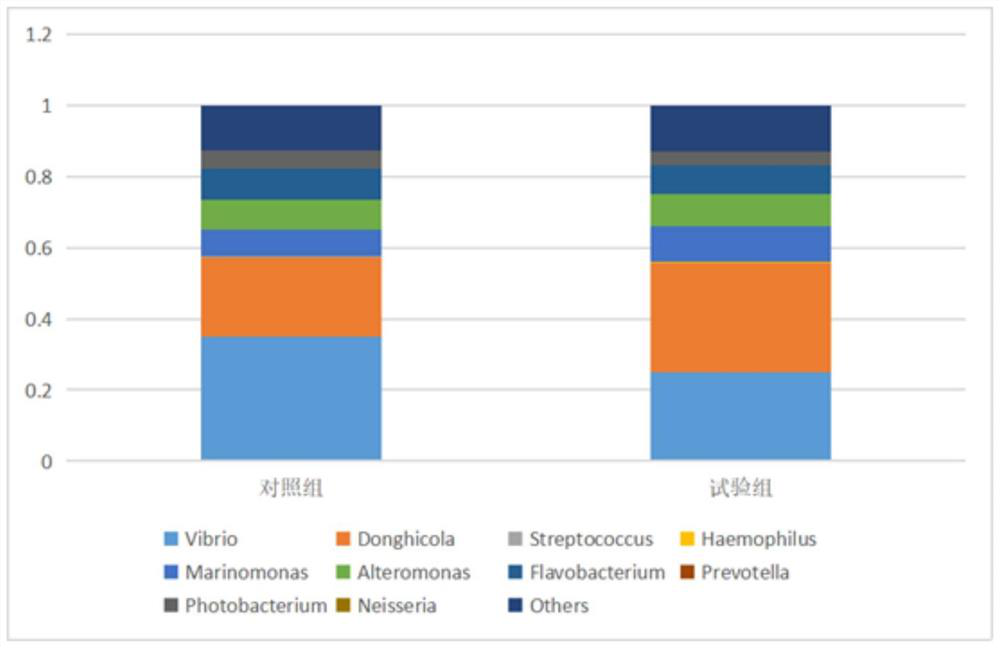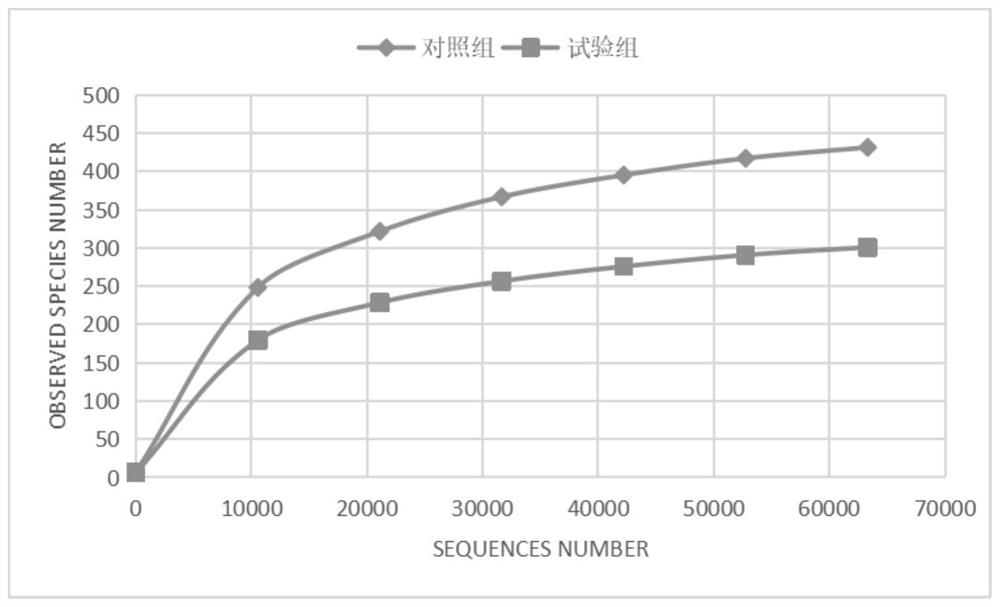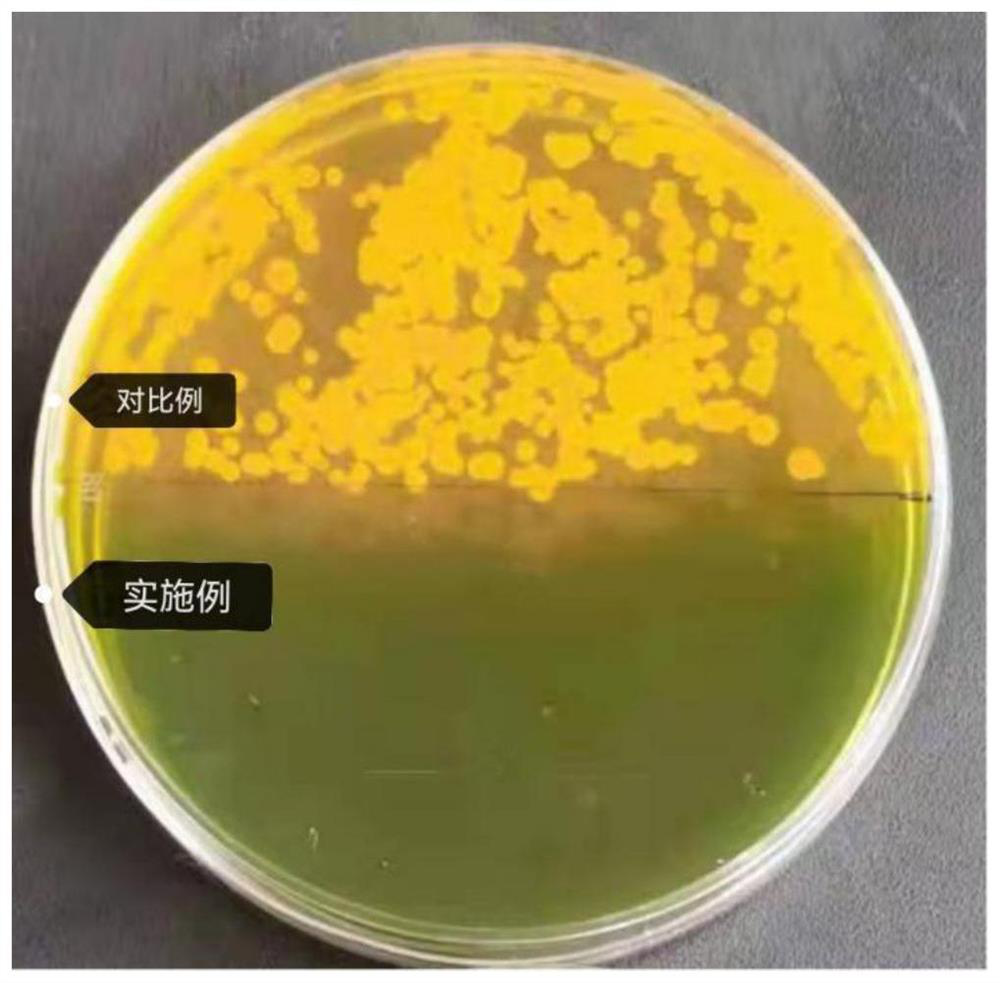Method for efficiently purifying artemia used in shrimp breeding period
A technology of purification treatment and nursery stage, applied in chemistry, animal husbandry, etc., can solve the problems of increasing the risk of disease outbreaks in shrimp seedlings, and achieve the effect of reducing the probability of disease
- Summary
- Abstract
- Description
- Claims
- Application Information
AI Technical Summary
Problems solved by technology
Method used
Image
Examples
Embodiment 1
[0033] A method for efficiently purifying and treating Artemia for shrimp seedling breeding period, comprising the following steps:
[0034] (1) Take out the frozen Artemia eggs and place them at room temperature for 2 days to wake up the dormant eggs.
[0035] (2) Load it into a 120-mesh nylon sieve mesh, and wash it with water repeatedly.
[0036] (3) Move into the formalin solution whose mass concentration is 200mg / kg, soak and disinfect for 30min (or soak for 30min with a mass concentration of 300mg / kg sodium hypochlorite solution (available chlorine content is 10%), and use large soda to neutralize after soaking residual chlorine).
[0037] (4) Put the sterilized eggs into the hatching tank (pool) at a rate of 3g per liter of water for hatching, keep the water temperature at 27°C and the salinity at 2, and carry out vigorous ventilation, and hatch the larvae after 18h.
[0038] (5) Separation of nauplii: First, stop breathing for 10 minutes, and use a 150-mesh Artemia c...
Embodiment 2
[0042] A method for efficiently purifying and treating Artemia for shrimp seedling breeding period, comprising the following steps:
[0043] (1) Take out the frozen Artemia eggs and place them at room temperature for 3 days to wake up the dormant eggs.
[0044] (2) Load it into a 120-mesh nylon sieve mesh, and wash it with water repeatedly.
[0045] (3) Move into the formalin solution whose mass concentration is 200mg / kg, soak and disinfect for 30min (or soak for 30min with a mass concentration of 300mg / kg sodium hypochlorite solution (available chlorine content is 10%), and use large soda to neutralize after soaking residual chlorine).
[0046] (4) Put the sterilized eggs into the hatching tank (pool) at a rate of 3.5g per liter of water for hatching, keep the water temperature at 28°C and the salinity at 3, and carry out vigorous ventilation, and hatch the larvae after 20h.
[0047] (5) Separation of nauplii: First, stop breathing for 10 minutes, and use a 150-mesh Artemia...
Embodiment 3
[0051] A method for efficiently purifying and treating Artemia for shrimp seedling breeding period, comprising the following steps:
[0052] (1) Take out the frozen Artemia eggs and place them at room temperature for 3 days to wake up the dormant eggs.
[0053] (2) Load it into a 120-mesh nylon sieve mesh, and wash it with water repeatedly.
[0054](3) Move into the formalin solution whose mass concentration is 200mg / kg, soak and disinfect for 30min (or soak for 30min with a mass concentration of 300mg / kg sodium hypochlorite solution (available chlorine content is 10%), and use large soda to neutralize after soaking residual chlorine).
[0055] (4) Put the sterilized eggs into the hatching tank (pool) at the ratio of 4g per liter of water for hatching, keep the water temperature at 30°C and the salinity at 3, and carry out vigorous ventilation, and hatch the larvae after 24h.
[0056] (5) Separation of nauplii: First, stop breathing for 10 minutes, and use a 150-mesh Artemia...
PUM
 Login to View More
Login to View More Abstract
Description
Claims
Application Information
 Login to View More
Login to View More - Generate Ideas
- Intellectual Property
- Life Sciences
- Materials
- Tech Scout
- Unparalleled Data Quality
- Higher Quality Content
- 60% Fewer Hallucinations
Browse by: Latest US Patents, China's latest patents, Technical Efficacy Thesaurus, Application Domain, Technology Topic, Popular Technical Reports.
© 2025 PatSnap. All rights reserved.Legal|Privacy policy|Modern Slavery Act Transparency Statement|Sitemap|About US| Contact US: help@patsnap.com



